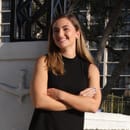March is finally here. For non-sports fanatics (like myself), March is that weird, in-between month equivalent to September, with the only highlights being St. Patrick’s Day and Spring Break. However, there is more to March than meets the eye.
If you turn on your television, scroll through Twitter, or talk to any basketball super-fan, March for them means one thing: March Madness.
Courtesy: seminoles.com
This term, which sounds totally unrelated to basketball, is used to define the complex system and high-stakes season that leads to the NCAA men’s basketball championship. While brackets may seem confusing, they are not. My entire all-women senior class created a bracket and gave a prize to our winner at the end of the championship season. If we, a group of coffee-fueled slackers, could make a bracket, so can you.
March Madness begins with Selection Sunday, which falls this year on March 11. Like the College Football Championship selection committee, a panel selects 68 NCAA Division I men’s basketball teams to be seeded into the tournament. 10 committee members from different regions of the country are tasked with looking at statistics (which I will never understand, no matter who tries to explain them to me) and representing their respective conferences like the ACC or the SEC. According to an extremely thorough timeline that I found on the NCAA’s website, the committee members begin their work in November, before the basketball season even begins. The members are assigned conferences to watch during the season. Then, in mid-February, the committee meets in Indianapolis to practice the bracket system. Additionally, a national broadcast lets eager fans know of the committee’s top picks for the bracket, including the Final Four. The Tuesday before Selection Sunday, the committee heads to the Big Apple to cast ballots and debate which teams should be selected for the pool of 64. This process occurs over five days. Yes, five days.
The Madness is so intense that there are numerous different rankings during the regular season, most notably the AP Top 25, which is currently lead by Virginia. These rankings aren’t produced by the selection committee but they’re usually a good indicator of which teams will do well in the tournament- unless there’s a big upset.
Courtesy: NCAA
While I’m no Ph.D. in Bracketology, I do have some bracket-making experience. In 2016, I selected Michigan State to win the entire tournament, only to have them fall in the first round in a startling upset. Regardless, the process of filling out and watching a bracket is pretty fun and super easy. When the bracket is released, you can go online and fill out each successive row until the bracket is complete. The bracket itself is divided into four regions: South, West, East and Midwest. The brackets furthest from the center will have the most spaces for teams- 64. You’re probably thinking “Wait, what? I thought there were 68 teams.” Naturally, the NCAA makes the process as confusing and competitive as possible. When the committee selects teams, 31 of the teams make the tournament automatically, and the remaining 37 are left up to the selection committee to vote on. Once the teams are narrowed down to 64, they are separated and ranked within the regions I mentioned above. From there, teams begin pairing up to play, getting knocked out with each successive round (Sweet Sixteen, Elite Eight- you knew those catchy little names would come back) until only two teams remain. These two teams will vie for the Championship title in San Antonio on April 2.
If you’re looking for a fun way to be competitive and to (sort of) pay attention to sports, make a bracket! After Selection Sunday (March 11), you’ll be able to set one up online through the NCAA or ESPN.



